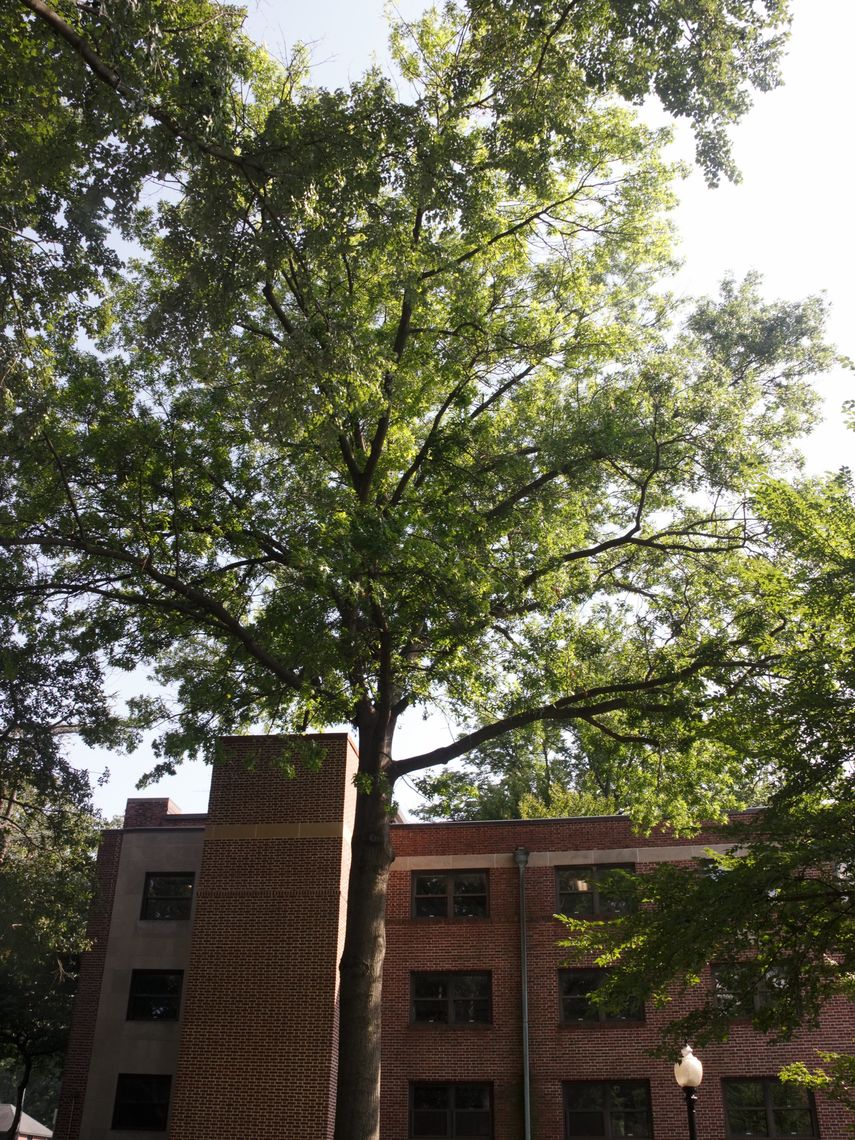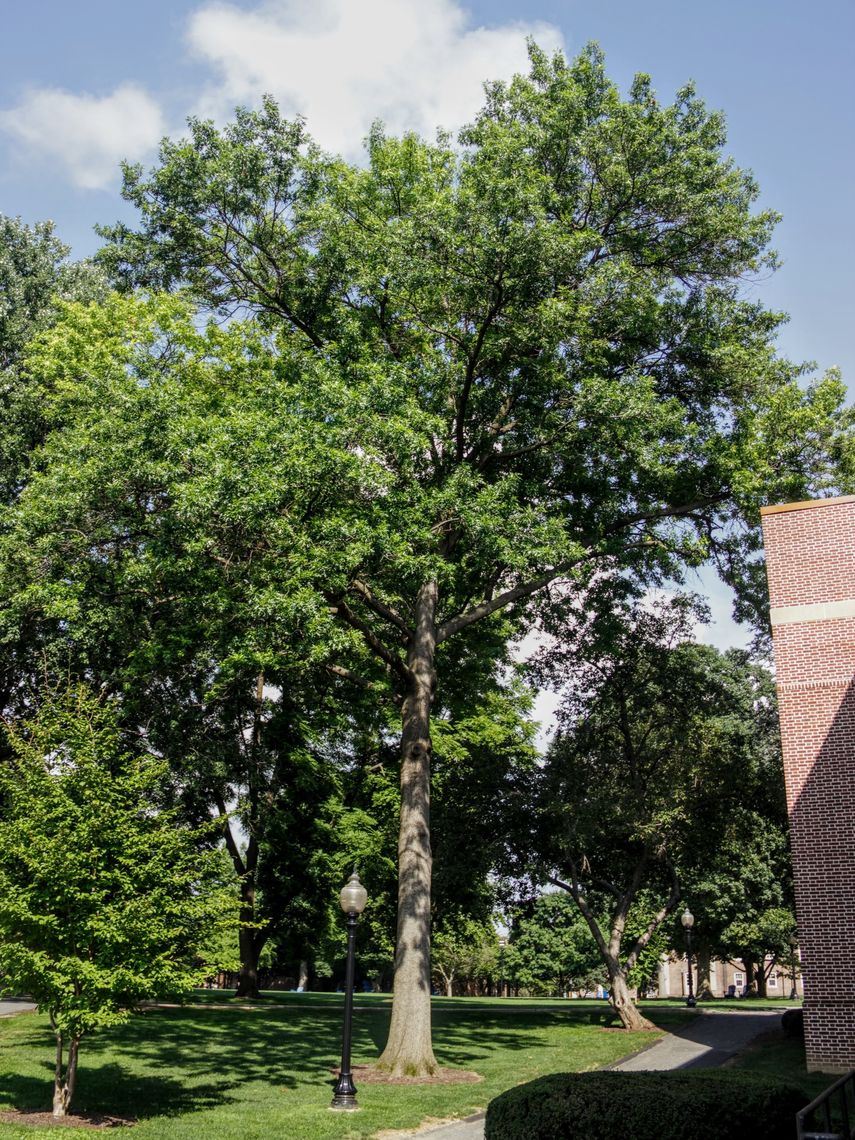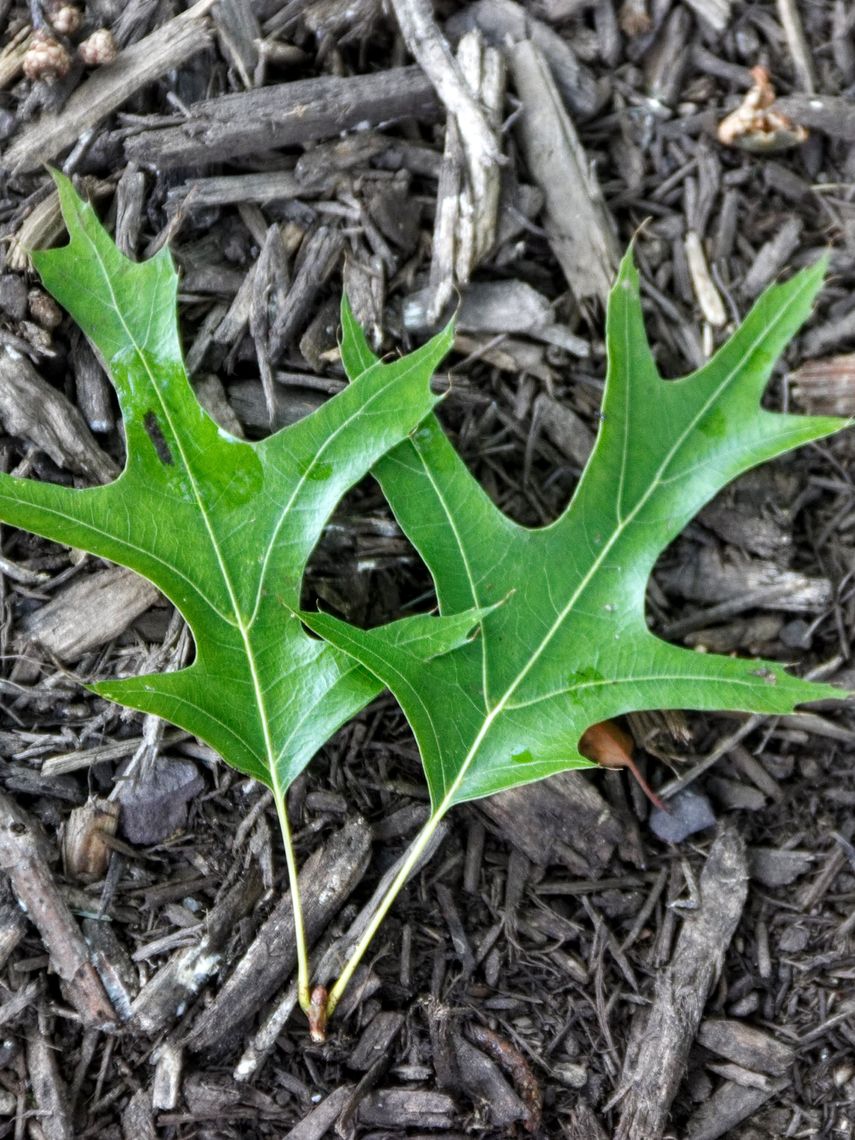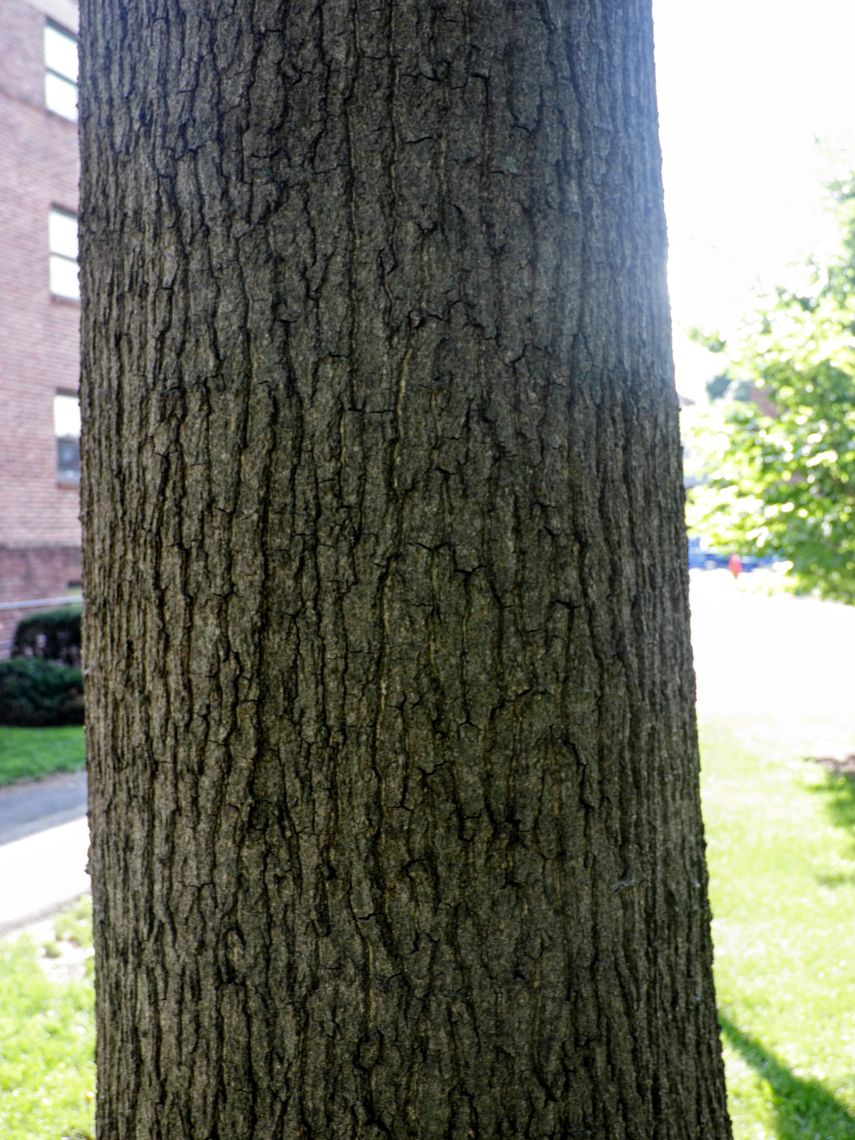Pin Oak (Quercus palustris)
The pin oak has lower branches that sweep down to almost touch the ground, middle branches that extend horizontally, and upper branches that reach straight upward. In the wild, the lowest branches are often shaded by other trees which causes these branches to die, break off, and leave pin-like stubs on the trunk, hence the tree's common name. Pin oak leaves have pointed and pronounced lobes and will turn deep red in the fall. This tree attracts birds and mammals.
Family: Fagaceae (Beech)
Characteristics: The 5-inch-long leaves have 5-7 pointed lobes and deep margins that cut close to the stem. The leaves are dark green and turn a russet-red in the fall. This tree produces insignificant yellow-green flowers that appear as catkins. Acorns are half an inch long and have thin caps that barely cover the nut. Bark is gray, smooth, and usually develops shallow ridges with age. This tree has a pyramidal to oval shape. Lower branches hang downward, middle branches extend horizontally, and upper branches are upright. This tree grows 60-70 feet high and 25-40 feet wide.
Foliage: Deciduous (leaves lost seasonally)
Geographic Origin: Northeastern United States, southeastern Canada (native)
Cultivation Notes: Requires medium maintenance. Does best in full sun. Prefers acidic and medium to wet soils. The pin oak is one of the easiest oaks to plant and transplant. This tree should not be planted in high pH soil, as it will cause the leaves to yellow.
Number on Campus: 9
Sources: Dirr, Morton Arboretum, Missouri Botanical Garden




